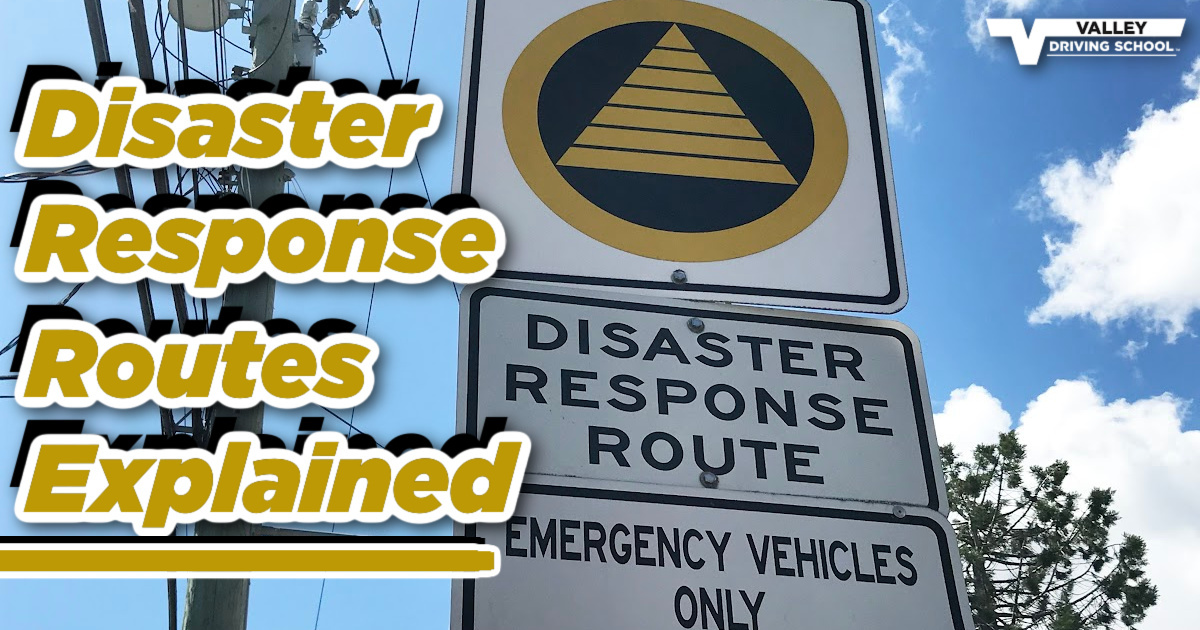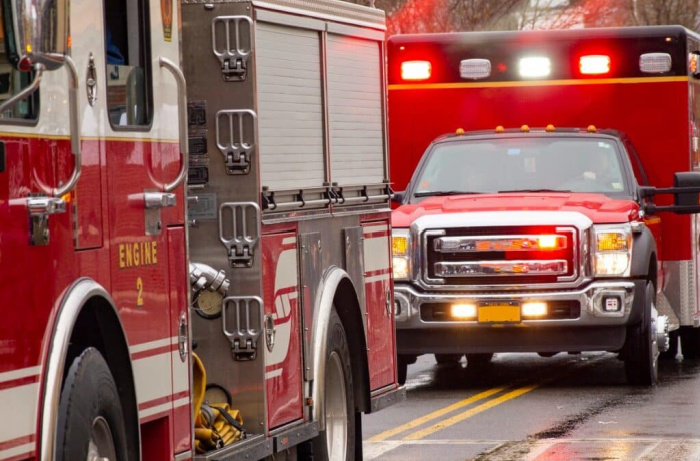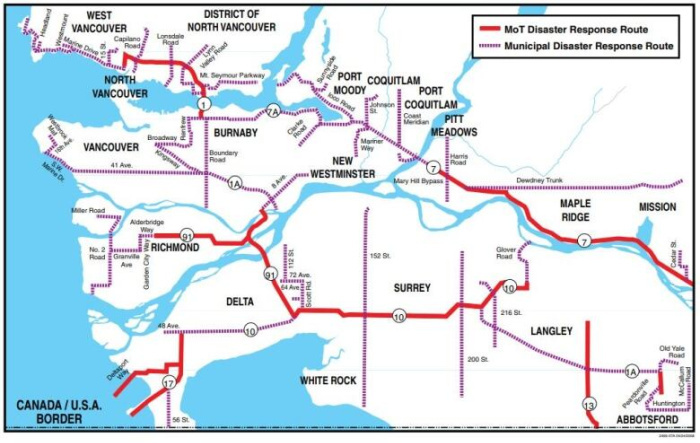As you’re driving across the Lower Mainland or Vancouver Island, you may notice vibrant yellow road signs with a black triangle. Many people think these signs represent public evacuation routes during an emergency, but this is incorrect.

These signs are disaster response routes and they indicate routes that are designated for use by emergency personnel during an emergency situation. In the case of an emergency, seconds can save lives. Therefore, disaster response routes were created.
What are disaster response routes?
Designated disaster response routes are a network of routes that allow emergency services to move easily and quickly in cases of disaster. Disaster response route signs are yellow circles with a black circle in the middle, and yellow lines that form a triangle. The two main purposes of disaster response routes are to save lives, property and infrastructure and to maintain the distribution of essential goods and supplies. The routes can be activated during emergencies such as earthquakes, transporting and treating sick and injured people, putting out fires, restoring water and electricity, and other critical services.
The network was created after the 1989 San Francisco and 1994 Los Angeles earthquakes and British Columbia witnessed how traffic routes can become clogged during disasters. As a coastal province with frequent earthquakes, it was important to create a system that prioritizes the safety of citizens and the ability for first responders to quickly get to the scene of disaster. This preparation reduces the risk of disasters and allows emergency response vehicles to be better prepared during recovery if a major natural disaster were to occur.
These routes are part of a larger emergency response plan — the Disaster Response Transportation (DRT). The DRT allows all levels of governments to align their disaster preparedness plans for more seamless, effective emergency response for all types of transportation (road, rail, marine and air).
Who can drive on disaster response routes?
Vehicles designated as “emergency personnel” are the only vehicles permitted on disaster response routes when emergency transportation is activated. This designation includes first responders as well as government officials and employees or volunteers for certain emergency-response organizations. Activation of disaster response routes can occur following a declaration of a local or provincial state of emergency.

In the past, first responders and emergency personnel were given stickers identifying them as authorized to use these essential routes. This identification system has been discontinued and disaster response route permits will no longer be accepted on activated disaster response routes. Now, first responders use a modernized communication system to clarify and specify who the priority transportation is for.
What happens when disaster response routes are activated?
Following the activation, emergency responders will have and control access to all disaster response routes. This enables lifesaving equipment, ambulances, police, fire fighters, supply convoys and evacuees to get to where they need to go in a prompt manner.
The entire system will not be activated in the case of emergency, unless it is necessary. The designated road closures may be chosen at the time of emergency to best reflect the situation and its needs. Unless otherwise stated, the rest of the route will be open for general public use. The designated response route system was designed to be flexible, and route closures may happen at any given time depending on the status of an emergency.

If you find yourself on a disaster response route during an emergency, exit the route as soon as possible. You are also responsible for moving your parked car if it is parked on a disaster response route - this is important to know if you happen to live or work along a disaster response route and routinely use street parking. If you regularly travel along one of these routes, learn an alternate route to use if an emergency is declared.
In the case of a public emergency, always obey all traffic signs and traffic control personnel. If possible, listen to the radio and monitor media for updates to find out which routes are open to non-emergency traffic.
–
Next time you’re driving, keep an eye out for disaster response route signs and familiarize yourself with any that are nearby your home, work, or school so you can be prepared if they are activated.
